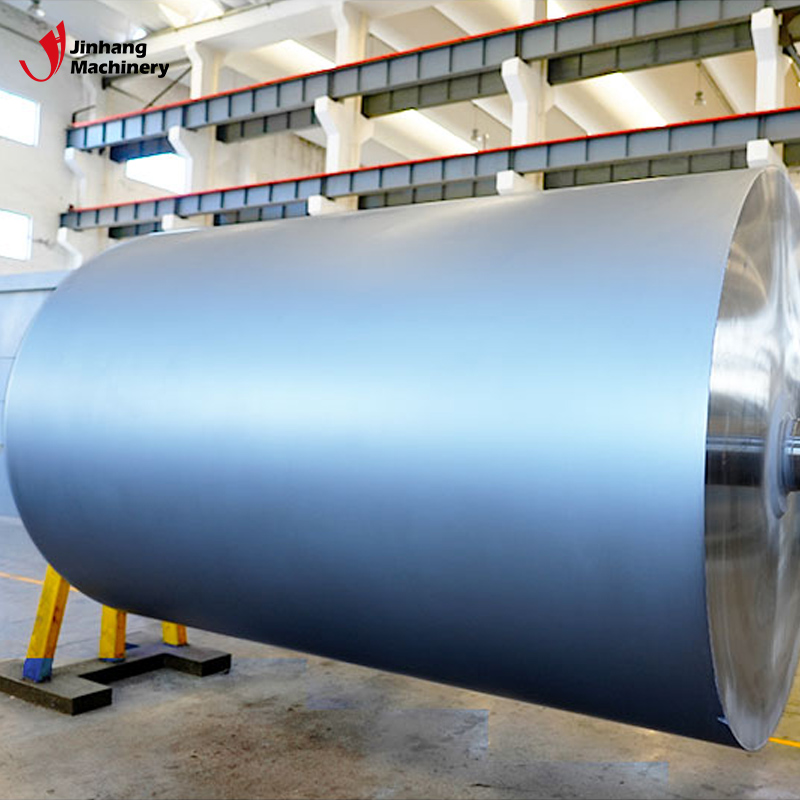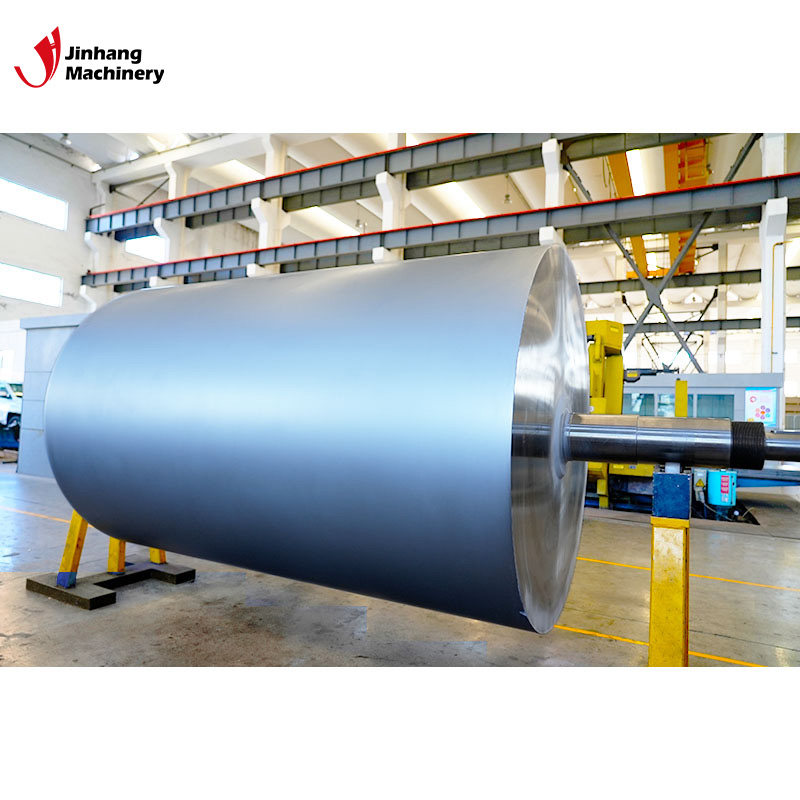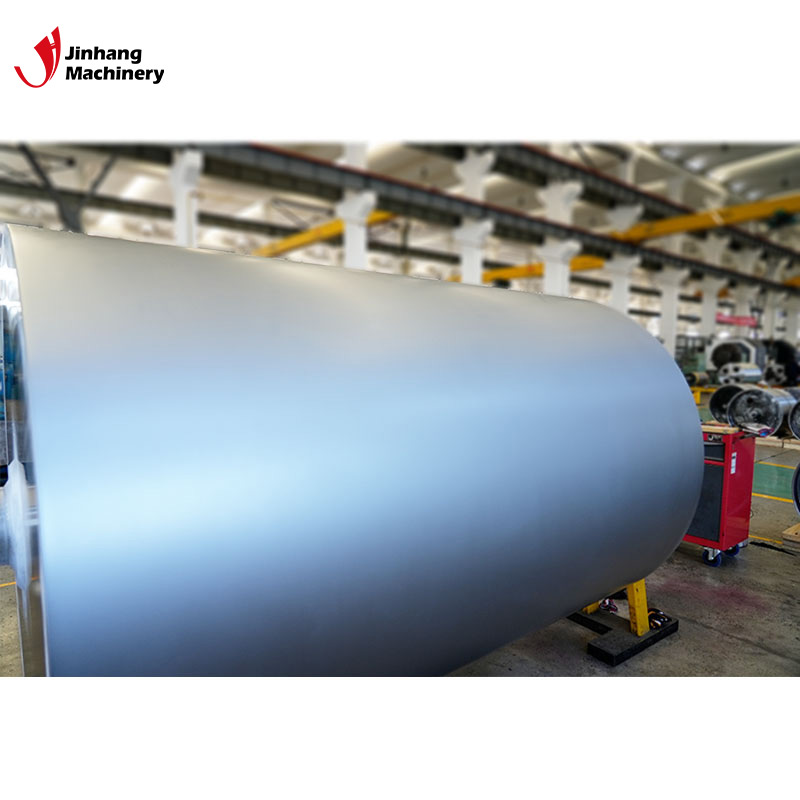Why choose electroplating to treat the surface of industrial water quench roller?
In many industrial production processes, rollers, as an important equipment component, bear a lot of loads and complex work tasks. Especially in industries such as metal processing, plastic processing, printing, and coating, the working environment of rollers is often very harsh, and they need to withstand various challenges such as high temperature, high pressure, friction, and chemical corrosion. Therefore, the surface treatment of rollers is particularly important to ensure their performance and reliability in long-term use. Electroplating, as a common surface treatment method, has been widely used in the manufacture of industrial water quench rollers. Its unique advantages make it one of the key means to improve the durability and work efficiency of rollers.
This article will discuss in detail why electroplating is chosen to treat the surface of industrial water quench rollers, analyze the principles, advantages, application scenarios of the electroplating process, and its key role in improving the performance of rollers, and help enterprises and technicians better understand the importance of this treatment method in industry.

What is an industrial water quench roller?
The industrial water quench roller is a roller that has undergone a special water quenching heat treatment process, which is usually used in high-temperature, high-speed, and high-load production environments. The water quenching process can improve the hardness and strength of the roller, making it less likely to deform or damage at high temperatures. However, the surface of the water quench roller usually has some problems such as insufficient hardness, poor corrosion resistance, and insufficient wear resistance. Especially during long-term use, the roller surface may be worn, scratched, corroded, etc., which will affect product quality and production efficiency.
In order to overcome these problems, many manufacturers choose to further improve the surface properties of industrial water quench rollers through electroplating. Electroplating is a method of depositing metal ions on the surface of an object through an electrolytic reaction, which can effectively improve the wear resistance, corrosion resistance, surface finish and other characteristics of the roller.
What is the basic principle of electroplating?
Electroplating is a technology that covers the metal surface with a layer of metal or alloy material through electrolysis. This process is usually carried out in an electrolytic cell containing a metal salt solution. By applying an external current, the metal ions in the solution are reduced and deposited on the roller surface, forming a uniform and dense coating.
The main principles of electroplating include:
● Electrolysis process: During the electroplating process, metal ions migrate from the electrolyte and adhere to the roller surface under the action of electric current. This process depends on factors such as the current intensity, metal salt concentration and solution temperature in the electrolytic cell.
● Deposition layer formation: As the current is continuously applied, metal ions will gradually deposit on the roller surface to form a dense and uniform coating. The thickness, hardness and structure of the coating can be controlled by adjusting the electroplating parameters.
● Alloying and coating strengthening: Some special electroplating processes, such as alloy electroplating, can form an alloy layer on the roller surface, thereby improving the performance of the coating and enhancing its corrosion resistance and wear resistance.

Improvement of the surface of industrial water quench roller by electroplating
Electroplating has significant advantages in improving the surface performance of industrial water quench rollers, and can effectively improve multiple important characteristics of rollers. The following are several major improvements that electroplating can make to the surface of water quench rollers:
1. Improve wear resistance
Industrial water quench rollers usually operate under high load and high speed working conditions, and the surface often wears. Electroplating, especially hard chrome plating, can significantly improve the wear resistance of the roller. The hard chrome layer has extremely high hardness and excellent anti-friction properties, which can effectively prevent the wear of the roller surface and extend its service life.
The hardness of the hard chrome plating can usually reach HV1000 or above, which enables the electroplated roller to maintain a low wear rate during long-term operation, reduce the frequency of equipment downtime and maintenance, and reduce production costs.
2. Enhance corrosion resistance
The corrosion resistance of industrial water quench rollers after surface treatment is poor, especially in wet environments with frequent chemical contact, where the surface is prone to oxidation or corrosion. Electroplating can effectively enhance the corrosion resistance of water quench rollers.
Electroplating, especially nickel, chromium and other materials, can form a dense protective layer on the roller surface, thereby preventing erosion by oxygen, moisture and other corrosive substances. This is especially important for rollers that need to be used in chemical or humid environments, such as papermaking, chemical and food processing industries.
3. Improve thermal stability
Electroplating can improve the thermal stability of the roller, especially through chrome plating, which can keep the surface of the industrial water quench roller in good performance under high temperature environment. The chrome plating layer has good high temperature resistance and is not easy to deform or peel off under high temperature working conditions, thereby improving the overall heat resistance of the water quench roller.
This high temperature stability enables electroplated water quench rollers to be used in more process environments, such as metal heat treatment, casting, plastic extrusion and other high temperature working environments, ensuring the stability and durability of the rollers in long-term work.
4. Improve surface finish and precision
Uneven wear, scratches or oxide layers often appear on the surface of water quench rollers, which not only affect the performance of the rollers, but also affect the quality of the products. Electroplating can make the roller surface smoother and flatter, reduce surface defects, and thus improve the working accuracy of the roller.
For example, the roller surface after electroplating is not only flat and smooth, but also more consistent surface quality can be obtained by controlling the thickness and uniformity of the electroplating. This is especially important for processes with strict requirements on surface quality, such as coating, printing, and film manufacturing.
5. Improve impact resistance
The electroplating layer of metals such as hard chrome and nickel can significantly improve the impact resistance of the roller. During the operation of industrial water quench rollers, they often encounter sudden impacts, pressures or temperature changes. The electroplating layer can provide additional impact protection for the roller to avoid surface damage caused by impact or vibration.
This impact resistance is particularly suitable for high-load and high-impact working conditions such as metal processing and mineral mining, which can ensure that the roller can still work stably under extreme working conditions.

Key factors for selecting electroplating treatment
Although electroplating treatment can bring many advantages to industrial water quench rollers, electroplating treatment is not suitable for all cases. When choosing electroplating treatment, enterprises should comprehensively consider the following key factors:
1. Working environment and load
Choose appropriate electroplating materials according to the working environment and load level of the industrial water quench roller. For example, if the roller needs to withstand high temperature or chemical corrosion, materials with good heat resistance and corrosion resistance such as chrome plating and nickel plating should be selected. If there is strong friction in the working environment, plating with high hardness and wear resistance such as hard chrome should be selected.
2. Production efficiency and cost
Electroplating treatment can significantly improve the performance of industrial water quench roller, but its cost is high, and the electroplating process requires a certain amount of time and equipment investment. Therefore, enterprises need to balance production efficiency and cost when choosing electroplating treatment to ensure its cost-effectiveness. For high-load and high-precision working environments, the high cost of electroplating treatment is acceptable, while for lower-load production lines, other treatment methods may need to be considered.
3. Surface quality requirements
Electroplating can improve the surface finish and precision of the roller. Therefore, it is an ideal choice for industries with high requirements for surface quality, such as printing, coating, packaging, etc.
4. Roller material and adaptability
Different industrial water quench roller materials have different adaptability to electroplating. Metal materials such as steel and aluminum can adapt to the electroplating process better, while some special alloys or non-metallic materials may require special treatment. Therefore, before choosing electroplating, it is necessary to ensure that the roller material is compatible with the electroplating process.
JH Machinery is a trusted supplier of industrial rolls, offering customized solutions at competitive prices. Established in 2001, our company has built a strong reputation for delivering high-quality products like rubber rolls, mirror rolls, and ceramic-coated rolls. Our ISO9001-certified facility caters to industries such as lithium battery production, automotive, and packaging. Partner with JH Machinery for factory-direct prices, reliable delivery, and professional after-sales service.
